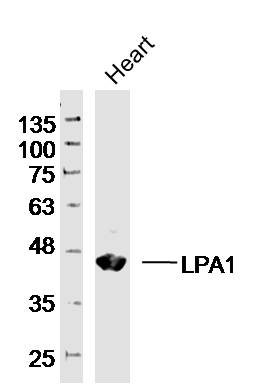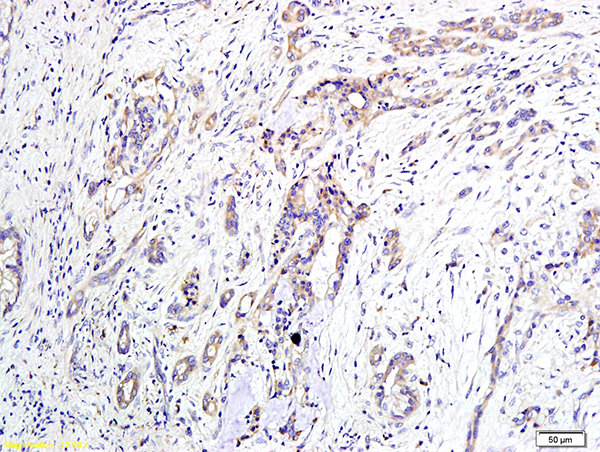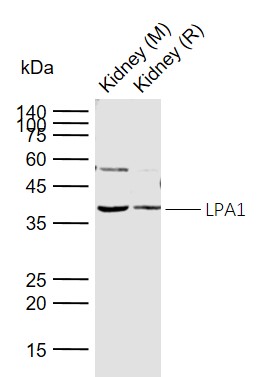
Lane 1: Mouse Heart lysates probed with LPAR1 Polyclonal Antibody, Unconjugated (bs-2880R) at 1:1000 dilution and 4˚C overnight incubation. Followed by conjugated secondary antibody incubation at 1:20000 for 60 min at 37˚C.
LPA1 Polyclonal Antibody
BS-2880R
ApplicationsImmunoFluorescence, Western Blot, ELISA, ImmunoHistoChemistry, ImmunoHistoChemistry Paraffin
Product group Antibodies
TargetLPAR1
Overview
- SupplierBioss
- Product NameLPA1 Polyclonal Antibody
- Delivery Days Customer16
- ApplicationsImmunoFluorescence, Western Blot, ELISA, ImmunoHistoChemistry, ImmunoHistoChemistry Paraffin
- Applications SupplierWB(1:300-5000), ELISA(1:500-1000), IHC-P(1:200-400), IF(IHC-P)(1:50-200)
- CertificationResearch Use Only
- ClonalityPolyclonal
- Concentration1 ug/ul
- ConjugateUnconjugated
- Gene ID1902
- Target nameLPAR1
- Target descriptionlysophosphatidic acid receptor 1
- Target synonymsEDG2, Gpcr26, LPA1, Mrec1.3, VZG1, edg-2, rec.1.3, vzg-1, lysophosphatidic acid receptor 1, LPA receptor 1, LPA-1, endothelial differentiation, lysophosphatidic acid G-protein-coupled receptor, 2, lysophosphatidic acid receptor Edg-2, ventricular zone gene 1
- HostRabbit
- IsotypeIgG
- Protein IDQ92633
- Protein NameLysophosphatidic acid receptor 1
- Storage Instruction-20°C
- UNSPSC12352203
References
- Chen L, Zhang J, Yang X, et al. Lysophosphatidic acid decreased macrophage foam cell migration correlated with downregulation of fucosyltransferase 8 via HNF1α. Atherosclerosis. 2019,290:19-30. doi: 10.1016/j.atherosclerosis.2019.09.001Read this paper
- Chen L, Zhang J, Deng X, et al. Lysophosphatidic acid directly induces macrophage-derived foam cell formation by blocking the expression of SRBI. Biochem Biophys Res Commun. 2017,491(3):587-594. doi: 10.1016/j.bbrc.2017.07.159Read this paper








